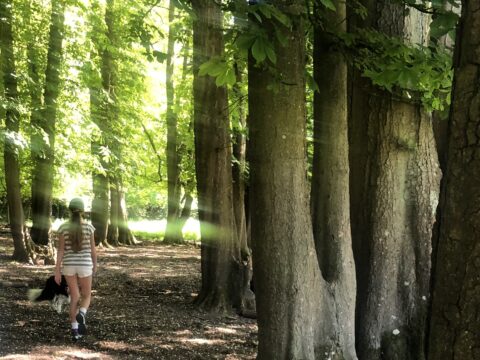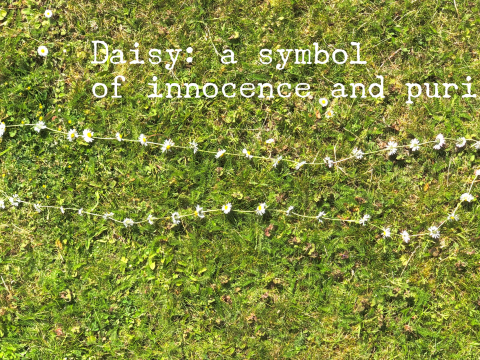
So, what next? As a family (less one with the Eldest still in hospital) we had now managed to do the Clarendon Way (a mere 26 miles) and the Wayfarer’s Walk (a longer 71 miles) and wanted something a little more challenging. And perhaps something with some history behind it. So, Father of the Tribe suggested the Pilgrims’ Way, a more ambitious walk from Winchester Cathedral to Canterbury Cathedral covering 153 miles. Having read Chaucer’s The Canterbury Tales at school this walk would perhaps make me appreciate the text more than I probably (definitely) did at the time. If you haven’t read Chaucer’s medieval text it is an astonishing poem of 17,000 lines containing 24 stories; there are plenty of modern English translations and it’s worth dipping into even if you don’t read the whole text. Just the thought that it was written in 1392 is extraordinary – reading the stories makes me think that mankind hasn’t really changed at all. The story is about a motley group of 31 pilgrims (including Chaucer himself) who meet in a drinking establishment in Southwark in London and travel together to the shrine of St Thomas Becket in Canterbury Cathedral. Despite sounding terribly pious, it absolutely isn’t and many of the characters are quite debauched. To pass the time on the journey they decide on a storytelling contest, with each telling two tales although it’s believed that the poem was never finished as there are only 24 finished tales. Within his entertaining tales, Chaucer makes observations of English society at the time; they are littered with criticism of the church, profanities and sexual innuendos. Interestingly it was banned in the US under the 1873 Cornstock Law (also known as the Federal Anti-Obscenity Act); I wonder how it will fare in the America of 2025 …

The historical background to The Pilgrims’ Way, dates back to 1170 when the Archbishop of Canterbury was Thomas Becket. Prior to becoming Archbishop, Becket and King Henry II got along extremely well. However, as Archbishop, Becket spurned all worldly pleasures and his relationship with Henry subsequently soured, eventually breaking down completely when Henry tried to limit the power of the Church thus increasing his own power as monarch. Becket refused to agree to the changes and fearing for his safety, fled to France. When Henry II had his son crowned to become ‘junior king’ the coronation was performed by the Archbishop of York – Becket as Archbishop of Canterbury, was furious as coronations were traditionally performed by the Archbishop of Canterbury, which was still his position although he was living in France. Appealing to the Pope, Becket and Henry resolved some of their differences and Becket returned to England although he excommunicated the bishops that were part of the ‘junior king’s’ coronation, from the Church thus enraging Henry again. It was at this point that Henry was believed to have shouted the fateful words “Who will rid me of this turbulent priest?”. This was overheard by four knights who then rode to Canterbury and on 29 December 1170, just as the Christmas Vespers were starting, entered the Cathedral and murdered Becket in a violent attack. After the murder, a number of miraculous healings were linked to Becket and resulted in the crypt where he had been buried being opened to pilgrims. In 1173 Becket was made a saint by the Pope; one of the fastest canonisations in history. On hearing the news of Becket’s death, Henry was horrified and in 1174 in a pilgrimage of forgiveness as penance for his involvement in the murder, he walked into Canterbury Cathedral barefoot kneeling at the tomb of Becket in the Cathedral where he was whipped by the monks. The king then kept vigil at the tomb overnight. Because of Becket’s death, Canterbury Cathedral became one of the most important pilgrimage destinations in Europe and Becket very much a European saint – there’s a chapel in Toledo Cathedral in Spain dedicated to Becket, a church in Salamanca, chapels in France, Hungary and Sicily. Pilgrims included Louis VII of France, Alexander II of Scotland, Edward I and the Holy Roman Emperor Charles V. In 1538 however, Henry VIII during the Reformation destroyed his shrine attempting to remove Becket from history altogether. It was only in 1871 that a pamphlet was written by the surveyor for the Ordnance Survey map of Surrey, Edward Renouard James, called ‘Notes on the Pilgrims’ Way in West Surrey’ and the route officially included on the OS map.
So, that’s the historical background, when a pilgrimage was journeying to a sacred place for religious devotion. Today however, pilgrimage is not necessarily about religion and it seems that pilgrimage in the 21st century is undergoing something of a resurgence. Perhaps it’s something to do with its simplicity, the act of putting one foot in front of the other, an antidote to the 24/7 world we live in. This is why I love these long distance walks; they are collaborative rather than competitive and it takes us away from the everyday with everyone looking up rather than down! And the thought that we will be following in the footsteps of kings, knights, popes and peasants is rather wonderful.




